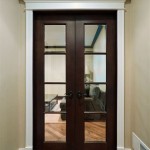How Much Does An Interior Designer Make In New York City?
The compensation for interior designers in New York City is a complex subject influenced by a multitude of factors. Understanding the nuances of salary expectations requires considering experience level, specialization, firm size, and the overall economic climate. This article aims to provide a comprehensive overview of the salary landscape for interior designers working in the vibrant and competitive market of New York City.
New York City, a global hub for design and architecture, presents unique opportunities and challenges for interior designers. The high cost of living, combined with the concentration of high-end residential and commercial projects, significantly impacts the potential earnings for professionals in this field. A clear understanding of the variables that contribute to salary determination is crucial for both aspiring and established designers seeking employment or negotiating compensation in the city.
The data presented in this article is derived from a compilation of sources, including salary surveys conducted by industry organizations, online compensation databases, and anecdotal evidence gathered from practicing interior designers. It's vital to acknowledge that these figures represent estimations and should be treated as guidelines rather than definitive benchmarks. Individual circumstances and negotiation skills will ultimately play a significant role in determining an individual's actual income.
Experience Level and Education
One of the most significant determinants of an interior designer's salary is their experience level. Entry-level positions, typically requiring a bachelor's degree in interior design or a related field, command lower salaries compared to those with several years of practical experience. Internships and apprenticeships can provide invaluable experience and may lead to higher starting salaries upon graduation. The formal education obtained also impacts the starting salary. A Master’s degree, or specialization in a particular design software like AutoCAD or Revit, can often justify a higher starting salary due to the advanced skillset presented.
As designers progress in their careers, their earning potential increases substantially. Mid-level designers, typically with 3-5 years of experience, are expected to manage projects independently and contribute to the overall design process. They may also be involved in client communication and vendor coordination. Senior-level designers, possessing over 5 years of experience, often take on leadership roles within a firm, overseeing design teams, managing budgets, and developing client relationships. These responsibilities are reflected in significantly higher compensation packages.
The progression in salary typically follows a predictable pattern. Entry-level designers in New York City might expect to earn in the range of $45,000 to $60,000 annually. Mid-level designers can anticipate salaries between $65,000 and $90,000. Senior-level designers, particularly those in management positions, may earn upwards of $100,000 or even $150,000+, depending on the size and profitability of the firm and the complexity of the projects they manage.
Specialization and Industry Sector
The area of specialization within interior design can also considerably affect earning potential. Some specializations are in higher demand or command premium rates due to the complexity or niche nature of the work. For instance, designers specializing in sustainable design, healthcare design, or hospitality design may find greater earning opportunities compared to general residential designers.
Commercial interior design, which encompasses designing offices, retail spaces, and restaurants, often offers higher salaries than residential design. The scale and complexity of commercial projects frequently necessitate advanced technical skills and project management expertise, justifying higher compensation. Designers working on high-end residential projects for affluent clientele can also earn significant income, particularly if they have a strong reputation and a proven track record of success.
The specific industry sector also plays a role. Designers working for large architectural firms or design studios tend to earn more than those working for smaller, independent firms. Large firms often have more resources, larger budgets, and more complex projects, allowing them to offer more competitive salaries and benefits packages. Public sector jobs, such as designing for government buildings, may offer lower salaries but often come with greater job security and comprehensive benefits.
Firm Size, Location, and Economic Conditions
The size of the interior design firm directly correlates with the resources available to pay its employees. Larger firms, with a more extensive client base and higher revenue, are statistically more likely to offer higher salaries and benefits packages than smaller studios or independent practices. The geographic location of the firm within New York City can also be a factor, with firms located in more affluent areas often charging higher fees and, consequently, being able to afford higher salaries.
Economic conditions at the time of employment significantly impact the salary range of an interior designer. When the economy is strong and construction activity is high, demand for interior design services increases, driving salaries upward. Conversely, during economic downturns, when construction projects are put on hold, demand decreases, and salaries may stagnate or even decline. The timing of entering the job market can therefore have a significant effect on potential earnings.
Furthermore, the negotiating power of the individual designer plays a critical role. Designers with specialized skills, a strong portfolio, and excellent communication skills are more likely to negotiate higher salaries and benefits packages. Networking and building relationships within the industry can also lead to opportunities and higher-paying positions. The ability to effectively present one's qualifications and negotiate compensation is a valuable asset in the competitive New York City job market.
In addition to base salary, interior designers may also receive bonuses, commissions, and other benefits, such as health insurance, paid time off, and retirement contributions. These benefits can significantly impact the overall compensation package and should be carefully considered when evaluating job offers. Some firms may also offer profit-sharing arrangements or opportunities for equity ownership, providing additional financial incentives and potential for long-term wealth accumulation.
Staying informed about industry trends, participating in professional development activities, and continuously expanding one's skillset are essential for maximizing earning potential in the field of interior design. The industry is constantly evolving, with new technologies, materials, and design philosophies emerging regularly. Designers who remain current with these trends are better positioned to command higher salaries and advance their careers.
The information provided here is intended to offer a general overview of the salary landscape for interior designers in New York City. It is important to conduct thorough research and consult with industry professionals to obtain the most accurate and up-to-date information. Each individual's situation is unique, and various factors can influence their earning potential. Successful interior designers are those who prioritize continuous learning, cultivate strong relationships, and possess the skills and ambition to succeed in the competitive New York City market.

How Much Does An Interior Designer Cost In 2024 Forbes Home

Interior Designers The Nyc Top 20 Daily Design News

The Best Of Usa Top 20 Nyc Interior Designers

Interior Designers The Nyc Top 20 Daily Design News
How To Become An Interior Designer A U S News Guide

New York Interior Designer On Why A Luxury Home Must Anticipate The Owner S Needs Mansion Global

Hot Jobs Make Your Mark As An Interior Designer

The 25 Rooms That Influence Way We Design New York Times

Post Pandemic A List Designers Offer Virtual Help For Much Less
Photos Show Interior Designer S Tiny Nyc Apartment Space Saving
Related Posts








